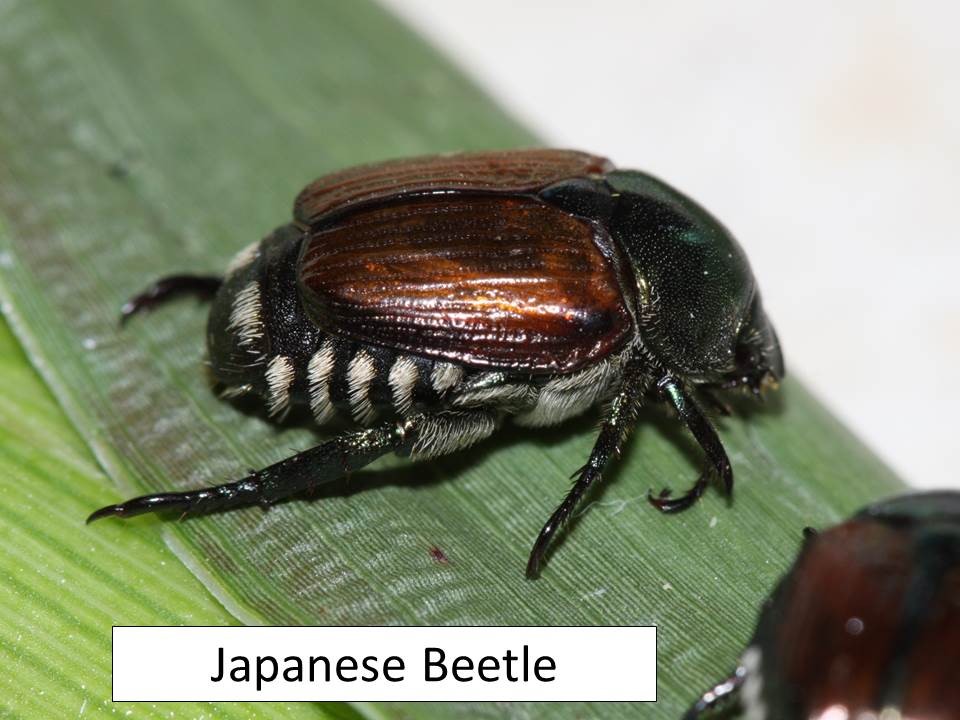Japanese Beetles
Japanese beetle adults are again making their annual appearance in eastern Ks., according to David Hallauer, Agriculture Extension Agent for the Meadowlark District. Japanese beetles (Figure 1) have a wide host range but, relative to crops, they usually only cause concern in corn if they infest during silking and soybeans, where they may cause some plant defoliation in early vegetative stages. For management decisions in corn, please refer to the KSU 2024 Corn Insect Management Guide (MF 810) and for soybeans, KSU 2024 Soybean Insect Management Guide (MF 743).

Figure 1. Japanese Beetle on a corn leaf. Pictures courtesy of KSU Extension Entomology
Burrowing Bugs
Small but common insects in soybean fields are burrowing bugs (Figure 2). Burrowing bugs are true bugs and, as such, feed by inserting their mouth parts into a host plant and sucking out the liquid. Burrowing bugs may feed on several different types of plants. In agriculture, they are most often noticed, and thus cause concern, after a herbicide (most usually Roundup) application starts killing the weeds in which they have been hiding and feeding in soybean fields. The weed most commonly associated with burrowing bugs is henbit (Lamium amplexicaule), and as this herbicide causes the henbit to die, the bugs, most often nymphs as this time, move out from under the henbit and often crawl in mass to nearby soybean plants where they may cause concern but very little damage. For more information, see https://entomology.k-state.edu/doc/extension--crop-pests/burrowing-bug.pdf.

Figure 2. Adult and nymph burrowing bugs. Pictures courtesy of KSU extension entomology
Amie Norton, Entomology Post-Doc Fellow
amien@ksu.edu
Jeff Whitworth, Extension Entomology Specialist
jwhitwor@ksu.edu